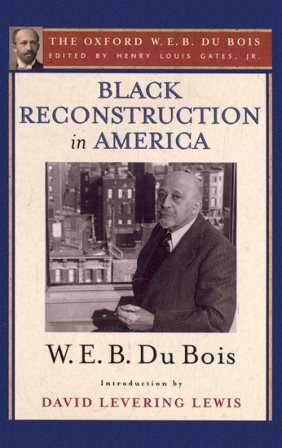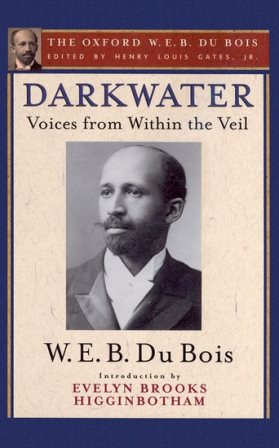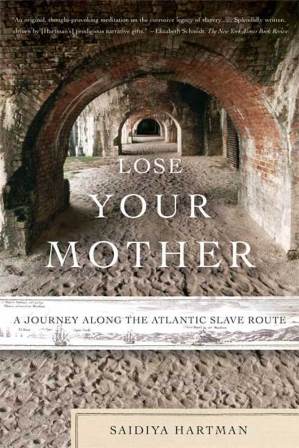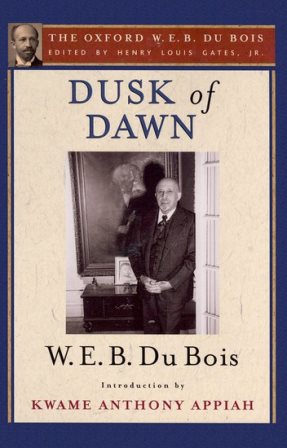Among W. E. B. Du Bois’s many influences on American social science, his account of compensatory whiteness within the US regime of racial capitalism is particularly significant. In Black Reconstruction in America1 Oxford: Oxford University Press, 2014More Info →, Du Bois famously argues that whiteness serves as a “public and psychological wage,” delivering to poor whites in the nineteenth and early twentieth centuries a valuable social status derived from their classification as “not-black.” The claims embedded in this thesis—that whiteness provides meaningful “compensation” (Du Bois’s term) for citizens otherwise exploited by the organization of capitalism; that the value of whiteness depends on the devaluation of black existence; and that the benefits enjoyed by whites are not strictly monetary—shaped subsequent efforts to theorize white identity and to grasp the (non)formation of political coalitions in the United States. The lasting impact of Du Bois’s thinking was evident most recently in debates surrounding the 2016 presidential election, in which the category of the “white working class” featured prominently. Commentators wrestled with whether the actions of this demographic could be best explained by feelings of economic insecurity, racial animus, or, in a more Du Boisean vein, some potent alchemy between the two.
Oxford: Oxford University Press, 2014More Info →, Du Bois famously argues that whiteness serves as a “public and psychological wage,” delivering to poor whites in the nineteenth and early twentieth centuries a valuable social status derived from their classification as “not-black.” The claims embedded in this thesis—that whiteness provides meaningful “compensation” (Du Bois’s term) for citizens otherwise exploited by the organization of capitalism; that the value of whiteness depends on the devaluation of black existence; and that the benefits enjoyed by whites are not strictly monetary—shaped subsequent efforts to theorize white identity and to grasp the (non)formation of political coalitions in the United States. The lasting impact of Du Bois’s thinking was evident most recently in debates surrounding the 2016 presidential election, in which the category of the “white working class” featured prominently. Commentators wrestled with whether the actions of this demographic could be best explained by feelings of economic insecurity, racial animus, or, in a more Du Boisean vein, some potent alchemy between the two.
The compensatory account is only one of the analyses Du Bois provides of the gratifications of whiteness, however. At the same time that he sets forth a metaphorical payment, which helps align white workers with their bosses and stabilize an exploitative economic order, he theorizes whiteness in terms that seem to complicate that framework. Most notably, alongside the idea of the wage—a formulation that assigns to antiblack racism a legible role in maintaining capitalist social control—Du Bois probes what he called the “irrational” dimensions of “race hate” and their place in constituting white identity. He draws attention to the cruel, excessive, even inexplicable qualities of antiblack racism in the United States.
This piece introduces a neglected dimension of Du Bois’s thinking, highlighting how his writings conceptualize antiblackness and its meaning for white citizens in ways that do not neatly conform to the “psychological wage” thesis. The primary aim is to deepen our understanding of Du Bois’s sharp analysis of American racial hierarchy. I also suggest that, although racial capitalism is lived today in forms Du Bois could scarcely have imagined, his account of antiblackness as a source of plural—and deeply disturbing—forms of white gratification nonetheless speaks to our contemporary condition.
My rereading of Du Bois focuses on his work from 1920 to 1940, an especially fecund period, even for a writer as prolific as Du Bois. It includes several major texts that document the revision and radicalization of his thinking since “The Souls of Black Folk.” Bookended by two important essay collections, Darkwater (1920) and Dusk of Dawn (1940), this period encompasses the publication of the magisterial Black Reconstruction in 1935 (published the year after Du Bois’s public break with the NAACP). Across these three books, Du Bois presents a complex and unsettling vision of antiblackness and the plural gratifications it offers to white Americans.
Seeing through white dominion
“Whiteness entails ‘passionate’ belief in one’s right to everything and anything.”The extraordinary essay “The Souls of White Folk” in Darkwater2 Oxford: Oxford University Press, 2014More Info → opens with Du Bois’s declaration that he is “clairvoyant,” able to see through white people and “see the workings of their entrails”3Ibid., 15.. And what does he find there? In a hypothetical exchange with a “sweeter soul of the dominant world” who pities Du Bois for his blackness and prays that one day he will be born white, Du Bois captures a defining feature of whiteness:
Oxford: Oxford University Press, 2014More Info → opens with Du Bois’s declaration that he is “clairvoyant,” able to see through white people and “see the workings of their entrails”3Ibid., 15.. And what does he find there? In a hypothetical exchange with a “sweeter soul of the dominant world” who pities Du Bois for his blackness and prays that one day he will be born white, Du Bois captures a defining feature of whiteness:
I ask soberly:
“But what on earth is whiteness that one should so desire it?” Then always, somehow,
someway, I am given to understand that whiteness is the ownership of the earth, forever
and ever, Amen!4Ibid., 16.
Du Bois expands upon this crucial insight. Whiteness entails “passionate” belief in one’s right to everything and anything. The “title to the universe claimed by White Folk” is an “extraordinary dictum,” which lies at the heart of white identity.5Ibid.
The essay does not directly name the source of this “phantasy” of dominion. Yet, if read alongside Black Reconstruction, the lineage of this powerful sense of entitlement becomes clear. Black Reconstruction offers an incisive critique of what Walter Johnson calls the “chattel principle” and exposes how the hierarchical relations characteristic of slave society persisted after abolition.6 Cambridge, MA: Harvard University Press, 1999More Info → These insights imply that the sense of “ownership of the earth” Du Bois identifies with whiteness in the twentieth century is rooted in the prior regime of racial capitalism that made black persons into commodities. What Du Bois theorizes as whites’ belief in their own total, almost ontological dominion is the unacknowledged legacy of a slavery system built upon “barter in human flesh.”7Du Bois, Black Reconstruction, 8.
Cambridge, MA: Harvard University Press, 1999More Info → These insights imply that the sense of “ownership of the earth” Du Bois identifies with whiteness in the twentieth century is rooted in the prior regime of racial capitalism that made black persons into commodities. What Du Bois theorizes as whites’ belief in their own total, almost ontological dominion is the unacknowledged legacy of a slavery system built upon “barter in human flesh.”7Du Bois, Black Reconstruction, 8.
Du Bois defines American slavery as the condition of being owned, illustrating the point by citing slave codes which described slaves as “devisable like any other chattel” and “purely and absolutely property.” He distinguishes chattel slavery from other forms of subordination and pinpoints its profound injustice, writing, “No matter how degraded the factory hand, he is not real estate.”8Ibid., 6–7. He thereby directs attention to “the chattel principle” Johnson recognizes: the reduction of human beings to commodities with prices, fungible objects of exchange to be bought, sold, and traded. According to Du Bois, property relations between owner and owned, not exploitation relations between boss and worker, were constitutive of slavery in the United States.
Therefore, it is no accident that in “The Souls of White Folks,” Du Bois speaks in the idiom of property relations (“ownership,” “title”) to characterize what he calls “the religion of whiteness” evident in his day. This language evokes a specific historical precedent—a regime within which humans socially categorized as black could be held as “real estate”—to illuminate what Saidiya Hartman calls “the afterlife of slavery.”9 Farrar, Straus and Giroux, 2007More Info →, Du Bois signals that the ethos of dominion, which animated white existence in antebellum America, did not simply disappear with abolition; it persisted, feeding the sense of unchecked proprietorship Du Bois locates in the very “souls” of white people.
Farrar, Straus and Giroux, 2007More Info →, Du Bois signals that the ethos of dominion, which animated white existence in antebellum America, did not simply disappear with abolition; it persisted, feeding the sense of unchecked proprietorship Du Bois locates in the very “souls” of white people.
Pleasure in black suffering
Du Bois offers a second powerful account of whiteness that places brutality at its center and insinuates that white Americans are conditioned to take enjoyment in black suffering. The sense of dominion uncovered in “The Souls of White Folk” is not abstract; it is often expressed in vicious, physical violence against blacks.10This is not its only expression, however. The essay includes a powerful critique of how the “title to the universe” is enacted in benevolent acts of charity that position black persons as objects.
On “pale, white faces” Du Bois sees “a writing of human hatred, a deep and passionate hatred, vast by the very vagueness of its expressions.”11Du Bois, “Souls of White Folk,” 16. He recounts in dramatic, arresting terms how black Americans have suffered at the hands of whites: “We have seen, you and I, city after city, drunk and furious with ungovernable lust of blood… what have we not seen, right here in America, of orgy, cruelty, barbarism and murder done to men and women of Negro descent?” This representation registers quite differently from the transactional motif of the wage. On this telling, whites, undifferentiated by economic class, are not so much parties to an exchange as they are mad, out of their minds, “imprisoned and enthralled” by a “phantasy” of world-mastery.12Ibid., 17.
Even more disturbing is Du Bois’s observation that whites’ “lust for blood” is also bound up with feelings of pleasure. He alleges neither indifference nor ignorance on the part of white people when he writes that “the hearts of millions of their fellows beat with fierce, vindictive joy” upon learning of black suffering. Du Bois dares his skeptical (white?) readers to consider whether they would in fact be pleased to learn of the extinction of black people. His provocation anticipates Hartman’s inquiry into “the role of enjoyment in the economy of chattel slavery”13 Oxford: Oxford University Press, 1997More Info →, and its afterlife.
Oxford: Oxford University Press, 1997More Info →, and its afterlife.
Du Bois implies that antiblackness verges on sadism, offering not just recompense but genuine pleasure to whites. He also suggests that joy may be felt not only by perpetrators of violence but by onlookers as well. Might this unsettling proposition offer purchase on a present in which spectacular images of antiblack violence and death are regularly produced, circulated, and consumed? While many of these photos and videos are recorded and distributed with the intent of documenting injustice, their effects may exceed this intent. Recent commentary addresses how these visuals can traumatize viewers of color, yet much less has been said about their reception by white audiences. But could a DuBoisean perspective disclose that repetitive viewing of such images may offer racialized pleasure for those invited to identify as (white) subjects vis-à-vis (black) objects? For white spectators consuming this imagery in the afterlife of slavery, might depictions of antiblack violence be as likely to affirm whites’ conceptions of themselves as subjects over and against black objects as they are to disrupt that schema? Images of black suffering may allow white onlookers to take enjoyment in imaginatively inhabiting positions of ownership and control, validating their “title to the universe.”
Irrational racism
Dusk of Dawn14 Oxford: Oxford University Press, 2014More Info → builds upon Du Bois’s conceptualization of whiteness-as-dominion and whiteness-as-sadism by emphasizing the “irrational” quality of antiblack feelings and practices. Although the meaning of this term remains somewhat opaque, it clearly signals what Du Bois regards as a vexing problem facing those struggling to dismantle white supremacy. Reflecting on the transformation his own thinking underwent in the preceding decades, Du Bois says his growing awareness of the “subconscious,” “unconscious,” “irrational,” and “habitual” forces at work in the maintenance of American racial hierarchy caused him to doubt whether full citizenship for black Americans was actually possible, even “many years” into the future.15Du Bois, Dusk of Dawn, 151.
Oxford: Oxford University Press, 2014More Info → builds upon Du Bois’s conceptualization of whiteness-as-dominion and whiteness-as-sadism by emphasizing the “irrational” quality of antiblack feelings and practices. Although the meaning of this term remains somewhat opaque, it clearly signals what Du Bois regards as a vexing problem facing those struggling to dismantle white supremacy. Reflecting on the transformation his own thinking underwent in the preceding decades, Du Bois says his growing awareness of the “subconscious,” “unconscious,” “irrational,” and “habitual” forces at work in the maintenance of American racial hierarchy caused him to doubt whether full citizenship for black Americans was actually possible, even “many years” into the future.15Du Bois, Dusk of Dawn, 151.
In a characteristic passage, Du Bois writes, “The present attitude of the white world is not based solely upon rational, deliberate intent. It is a matter of conditioned reflexes; of long followed habits, customs, and folkways; of the unconscious trains of reasoning and unconscious nervous reflexes.”16Ibid., 86. He calls attention to the possibility that “racial repulsion” is not entirely susceptible to argument or reasoned persuasion, the techniques upon which antiracist political actors have mostly relied.17Ibid., 104. He writes that when he led the NAACP and was editor of The Crisis, he believed racism was based on ignorance and “all human action…was conscious and rational. There was no twilight zone.”18Ibid., 141.
In the twilight zone Du Bois now recognizes, “race prejudice” cannot be “cured by information.”19Ibid., 98. He points to “stronger and more threatening forces, forming the founding stones of race antagonisms which we had only begun to attack or perhaps in reality had not attacked at all.”20Ibid., 141–2. Observations like this, in combination with Du Bois’s reference to Freud’s influence on his thinking, hint that the “irrational” qualities of “racial repulsion” may call for psychoanalytic, and not only psychological, interpretations of white-over-black hierarchy.21Ibid., 148.
Racial capitalism’s potent alchemy
Du Bois’s most well-known account of whiteness instructs that the maintenance of racial hierarchy in the United States entails a payment in the form of social status, which helps secure acquiescence to capitalism. This remains an important analytical lens today, especially in response to the claim that Trump’s economic populism, not his virulently racist and nativist rhetoric, attracted supporters. (It can also counter the less common position that Trump’s overt racism can be isolated from his invocations of economic insecurity to explain his rise.) Du Bois’s examination of compensatory whiteness reminds us that Trump’s (re)drawing of the color line in the context of the suffering generated by capitalism is a very old practice. Political appeals in the United States routinely link whites’ (legitimate) fear of economic insecurity to (illegitimate) antiblack sentiment. Racial capitalism very nearly requires that linkage.
“Several studies show that perceived symbolic losses to white hegemony… prompt ‘whitelash’ responses, independent of whites’ personal experiences of economic difficulty.”At the same time, however, Du Bois’s work demonstrates that the “public and psychological wage” explanation is incomplete. We would do well to heed this insight too. As tempting as it may be to believe that racism endures in the twenty-first century (and has acquired new life in the Trump presidency) solely because of misplaced grievances generated by an unforgiving capitalist order, such an elegant explanation cannot stand. For example, several studies show that perceived symbolic losses to white hegemony (the Obama presidency, a future majority-minority United States), prompt “whitelash” responses, independent of whites’ personal experiences of economic difficulty.22For reference on this topic, see
→Michael Tesler, “The Return of Old-Fashioned Racism to White Americans’ Partisan Preferences in the Early Obama Era,” Journal of Politics 75, no. 1 (Jan. 2013): 110–123, http://www.jstor.org/stable/10.1017/S0022381612000904?origin=JSTOR-pdf.
→Robb Willer, Matthew Feinberg, and Rachel Wetts, “Threats to Racial Status Promote Tea Party Support Among White Americans,” SSRN (May 4, 2016), http://dx.doi.org/10.2139/ssrn.2770186.
→Maureen A. Craig and Jennifer A. Richeson, “On the Precipice of a ‘Majority-Minority’ America: Perceived Status Threat from the Racial Demographic Shift Affects White Americans’ Political Ideology,” Psychological Science 25, no. 1 (2014): 1189–1197, http://groups.psych.northwestern.edu/spcl/documents/Craig_RichesonPS_updatedversion.pdf. Du Bois’s searing critique of the quasi-religious belief in white entitlement can shed light on this tendency. In addition, his unsettling claim that black death serves as a source of white satisfaction underscores why the Movement for Black Lives must carry on the counter-propaganda campaign encapsulated in its central slogan. Its platform calls for massive (and policy-specific) economic transformation as integral to achieving freedom. Yet, the “Black Lives Matter” mantra also signals that because antiblackness in the United States operates on visceral and affective registers, so too must the struggle against it.
Michael Rogin once noted that it is tempting to “cling to instrumental rationality” to make sense of black suffering and death, in order to “defend against the horror at the center of [the] story.”23 Michael Rogin, review of The Rise and Fall of the White Republic: Class Politics and Mass Culture in Nineteenth-Century America by Alexander Saxton, American Historical Review 97, no. 2 (April 1992). Du Bois’s “public and psychological wage” thesis arguably casts antiblack racism in instrumental terms by stressing its role in a transaction that serves the ends of capital. Yet Du Bois also confronts the “horror” of which Rogin spoke. When he “sees through” white people, he finds them to be in thrall to the belief that they are “demi-gods,” driven by “ungovernable” rage, and inclined to take pleasure in black pain and death. These startling reflections on the irrationality of antiblackness urge us to face the most troubling features of racism in the United States today.
References:
→Michael Tesler, “The Return of Old-Fashioned Racism to White Americans’ Partisan Preferences in the Early Obama Era,” Journal of Politics 75, no. 1 (Jan. 2013): 110–123, http://www.jstor.org/stable/10.1017/S0022381612000904?origin=JSTOR-pdf.
→Robb Willer, Matthew Feinberg, and Rachel Wetts, “Threats to Racial Status Promote Tea Party Support Among White Americans,” SSRN (May 4, 2016), http://dx.doi.org/10.2139/ssrn.2770186.
→Maureen A. Craig and Jennifer A. Richeson, “On the Precipice of a ‘Majority-Minority’ America: Perceived Status Threat from the Racial Demographic Shift Affects White Americans’ Political Ideology,” Psychological Science 25, no. 1 (2014): 1189–1197, http://groups.psych.northwestern.edu/spcl/documents/Craig_RichesonPS_updatedversion.pdf.














Pingback: Decolonising Luddism | The BANDUNG2 Blog